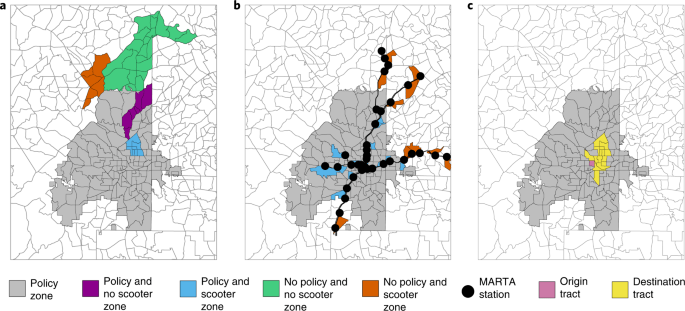These past few years, we’ve observed major changes in vehicle ownership significantly impacting the future of the automotive industry. From vehicle ownership to car-sharing applications, our use of vehicles is completely changing. Let’s go through some of the major reasons for these changes and how they are shaping mobility trends.
Rising costs
The average new car price is above $48k, making it difficult for buyers of all ages to invest in a new vehicle. There are multiple reasons for this high cost.
The COVID-19 pandemic has pushed people away from public transportation solutions like the bus or the subway, generating higher demands. In parallel, the industry has been facing microchip shortages. This means fewer vehicles get produced, resulting in low inventories. When demand is higher than the offer, prices rise.
But the high purchase cost, be it new or used, is not the only financial aspect pushing back vehicle ownership. With the global economic context, the cost of fuel has skyrocketed in most countries. This trend is affecting not only gasoline and diesel, but also electric vehicles (EV) since the cost of electricity is rising as well.
On top of that, owning a car also implies multiple additional costs like insurance and parking. The insurance rates have increased by 4.9% in the US alone this year, compared to 2021. The average cost for insurance is $1771 per year for full coverage. With inflation hitting most countries, it’s becoming very difficult to become a vehicle owner or even to remain one. Luckily, with the advent of new mobility trends and solutions, not everyone needs to buy a car.
Mobility services
As more people live in cities, owning a vehicle that will stay parked for 99% of the time doesn’t make much economic sense. Plus, the environmental impact of a vehicle throughout its lifecycle makes more people change their minds about actually buying a vehicle.
With work from home policies becoming more common, owning a vehicle is becoming less a desire and more of a constraint. On the other hand, the use of mobility services has constantly been increasing.
Users now have tons of options for sharing their vehicle, accessing a shared one, or requesting a carpooling trip. On top of that, ride hailing apps are all the rage, with multiple companies like Uber, Lyft and Grab dominating the market and shaping the future of the automotive industry.
As customers and users are changing the way they consume mobility, OEMs are changing the way they are making their vehicles. A shared vehicle needs to be unlocked remotely or using a smartphone app. It also needs to provide information on its range and geographical position so that fleet managers can indicate the best fit for specific users and demands.
This opens up multiple business opportunities, like OEM-managed insurance, vehicle fleet management, maintenance services for shared vehicles, etc.
Autonomous driving technology will further ignite new business models
It is expected that mobility services will benefit from autonomous driving (AD) technologies. As more vehicles will drive themselves in certain specific conditions, the users of these vehicles will be able to optimise their time while they’re in traffic jams, for example.
Most of us already take business calls from our vehicles. But in the very near future, our cars may become even more productivity-centric spaces, enabling video calls and advanced work collaboration. On the other side of the spectrum, AD vehicles will also allow users to consume content way more often, like TV shows, movies and even video games. Yes: if the car drives itself, you might as well “Netflix and chill.”
Automotive companies may soon become more like tech companies providing content and connected services. Shared subscriptions could have a lot of success and generate not only new businesses, but also attract new customers that were previously not enticed by specific OEM brands or cars in general.
Imagine paying for a trip and having access to exclusive content from your favourite streaming service. Or your car suggesting that you stop by your favourite coffee chain because they have a 10% discount promo. This prospect may be closer than we think.
The future of the automotive industry is software-defined
All of the changes stated above are made possible thanks to software. The success of an automotive company is now linked to their capacity to innovate and invest in software. Indeed, the evolution of vehicle ownership implies key changes in the way we make them. As the components’ costs are rising and the number of features and services included in a vehicle are exponentially increasing, software transformation is the key to success.
In order to ensure the addition of new features, electrical and electronic (E/E) architectures are becoming highly complex. OEMs are now trying to simplify said architectures to guarantee scaling and manageability of the components and processes. For it to work, there need to be more advanced abstraction layers as well as a more consolidated approach to the hardware components in future vehicles.
For cost optimisation and access to the biggest pool of software skills, companies should invest in open-source software. Open source, by definition, allows for transparent checking of the code itself, hence ensuring that it is secure by having neutral and external verification, but it also enables customisation when it is required.
Automotive companies will most probably build partnerships with key software editors to tackle the software-defined vehicle challenge. That being said, with safety and cybersecurity constraints, OEMs will have to choose wisely to ensure the long-term support of their vehicles and associated services. Doing so may be definitive to reaping the benefits of these new, software-defined business models.
The road ahead
The automotive industry seems to be moving away from individual vehicle ownership and more towards the practicality and added value of the chosen mobility service that a vehicle or brand can provide.
New business models will emerge from this shift and will surely cover the whole vehicle lifecycle. Software will be a centrepiece in this change. We often hear about companies trying to start from scratch and invest millions in software developments in order to reach the level of existing competitors. That may not be the best approach.
In order to move quickly and obtain their share of these new business opportunities, OEMs and automotive companies need to embrace open-source software. No need to reinvent the wheel.
Automotive companies need vendors they can trust. Canonical created the concept of long-term support. We deliver Ubuntu releases and security patches like clockwork. OEMs and Tier1s can rely on the tools and the support we provide, helping the automotive industry accelerate this software-focused transition.
Want to learn more about digital disruption in automotive? Read our whitepaper!
Curious about automotive at Canonical? Check out our webpage.




